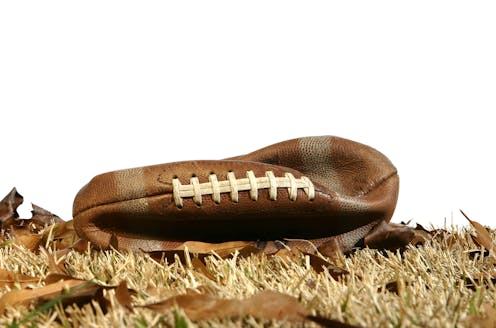5 Super Bowl commercials that deserve places in the advertising hall of shame
A depressed robot, a drugged Kenyan and a singing Saab driver − what could go wrong?

What makes something a flop?
Not the kind of flop that Kansas City Chiefs quarterback Patrick Mahomes is prone to do, but a flop in the world of advertising?
Brands airing Super Bowl ads have a lot riding on their investments – roughly US$7 million for a 30-second spot for the 2025 big game. So there’s a lot of pressure to get things right.
In my advertising classes, I often tell students that a commercial that’s controversial or disliked in the moment shouldn’t necessarily be considered a failure. In fact, enragement drives engagement. So if one of the goals of advertising is to keep the brand top of mind for consumers, a hated Super Bowl ad still accomplishes at least one goal. Think of the now-infamous Pepsi ad where Kendall Jenner “solves racism” with a can of Pepsi. Or all those raunchy GoDaddy ads that everyone rolled their eyes at, but the company kept running, year after year.
Instead, a true advertising face-plant is an ad that’s both tone-deaf and completely forgettable – so dull, off-putting or confusing that when a brand completely switches up its strategy, you almost don’t remember the massive blunder that compelled it to change course in the first place. Almost.
So with this definition in mind, here are my submissions for five of the biggest Super Bowl advertising flops.
1. General Motors, 2007
A GM robot gets so depressed after getting fired that it jumps off a bridge to end its own existence.
How endearing.
The ad for the then-struggling automaker, which aired during Super Bowl 41 between the Indianapolis Colts and Chicago Bears, features a robot that struggles with depression and existential angst after learning its services are no longer needed on the assembly line.
The robot questions its meaning and purpose and tries to combine dark humor and social commentary about the monotony of work and the inevitability of technological progress. But it ends up missing the mark for a few reasons.
Suicide is pretty bleak for a Super Bowl spot, and mental health, in general, is a sensitive topic. There was little effort made to connect the spot to core GM brand values, which include inspiring “passion and loyalty” and “serving and improving communities.”
Furthermore, the idea of robots having human emotions can be off-putting for many consumers – particularly at a time when many automotive and factory workers in the U.S. were rightly concerned about robots taking their jobs.
2. Groupon, 2011
Sometimes I try to imagine the meetings at ad agencies where ideas for clients are batted around:
“We need to promote this new app that lets families get products like smoothies at slightly discounted prices.”
“OK, how about this: It starts as a Tibetan tourism ad. Then it takes a dark turn and suggests that Tibet is about to be wiped off the map. That’s when our client’s product gets introduced: We tell viewers that before Tibetan culture goes extinct, they should try fish curry, like these 200 people in Chicago who saved $15 at a Himalayan restaurant using Groupon.”
“Excuse me?”
“Oh – and let’s have the narrator be a white guy with long sideburns.”
I have no idea how this one avoided the cutting-room floor.
3. Nationwide Insurance, 2015
The insurance company used a strange mix of heartbreak and guilt-tripping to try to entice viewers to buy its policies during Super Bowl 49.
The ad features a young boy narrating in a somber tone, listing all of the milestones he’ll miss because he’s dead: learning to ride a bike, travel the world, get married.
The twist is that the cause of his death is an accident. That’s where Nationwide comes in: They offer life insurance to help offset tragedies. But wait – insurance doesn’t prevent tragedies. It merely provides compensation to “replace” what you lost. Both the morbid tone and twist were bizarre.
Exploiting tragedies in advertisements is generally not going to win people over. I can’t imagine how it would feel to be a parent who’s lost a child and see this TV ad.
4. Audi, 2020
Can a “Game of Thrones” star join forces with Disney while highlighting the importance of sustainability to create an ad for … Audi?
In the minute-long spot, Masie Williams, who plays Arya Stark on “Game of Thrones,” belts out the lyrics to “Let It Go,” the hit single from Disney’s “Frozen.” As she drives, pedestrians join her in song. At the end of the ad, Audi announces that they are finally making an electric car.
The ad seems to be about “letting go” of fossil fuel dependence – the gas sign yells it, car dealership yells it, mechanics yell it – almost two decades after the first major electric car hit the market.
Was it meant to be empowering? Funny? Inspirational? It tried to do a little bit of everything, leaving viewers grasping and gasping. Not to mention the song “Let It Go” had come out seven years prior, which made the whole production seem even more dated.
5. Just For Feet, 1999
Close your eyes.
Imagine an ad that’s racist and confusing.
Imagine an ad in which the main character is disappointed to receive the product being advertised.
Imagine an ad so bad that the company sues the agency responsible for the ad because it destroyed their reputation and bankrupted them.
Ladies and gentlemen, I give you Just For Feet’s “Kenyan Runner” Super Bowl ad.
The ad depicts a barefoot Kenyan runner sprinting across a rugged landscape as a group of white men in military SUVs tracks him down as if on a hunting expedition.
After they eventually catch him, they forcibly drug him by offering a mysterious beverage. The runner drinks it, collapses and wakes up to find that he is now wearing a pair of Just For Feet sneakers. He looks confused and distressed, as if he’d been violated.
Bizarre and unsettling, indeed. Just For Feet filed for bankruptcy less than a year later.
Matthew Pittman does not work for, consult, own shares in or receive funding from any company or organization that would benefit from this article, and has disclosed no relevant affiliations beyond their academic appointment.
Read These Next
Christmas trees are more expensive than ever in Colorado — what gives?
Most Christmas trees are imported from other states, which drives up costs.
Best way for employers to support employees with chronic mental illness is by offering flexibility
Employers that don’t support employees with mental illness risk missing out on the talents and skills…
How are dark matter and antimatter different?
Normal matter – which makes up everything we see and touch – isn’t the only type of matter present…





